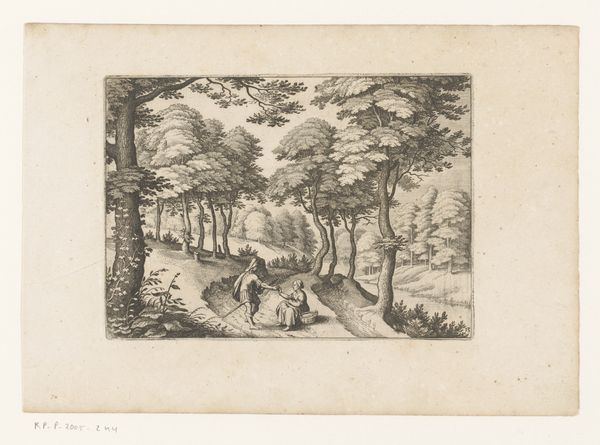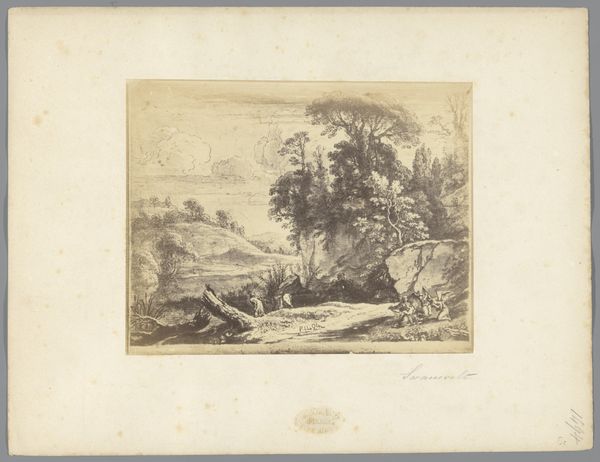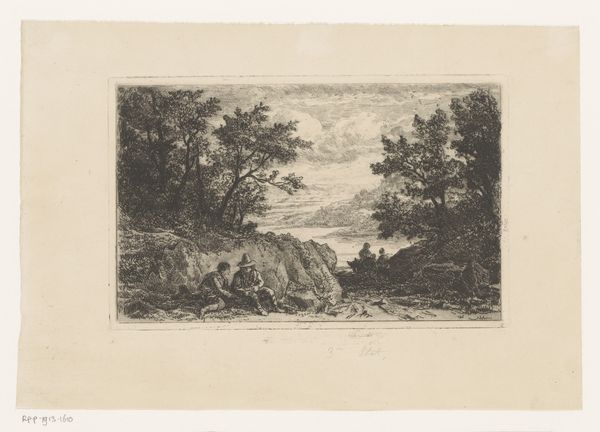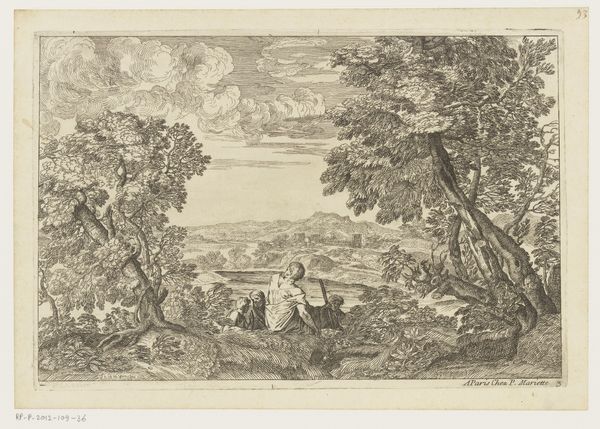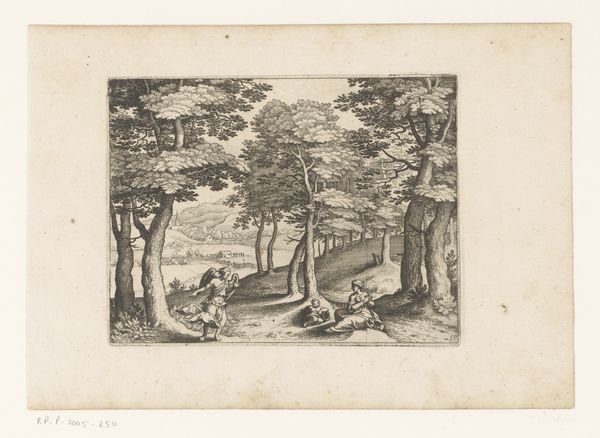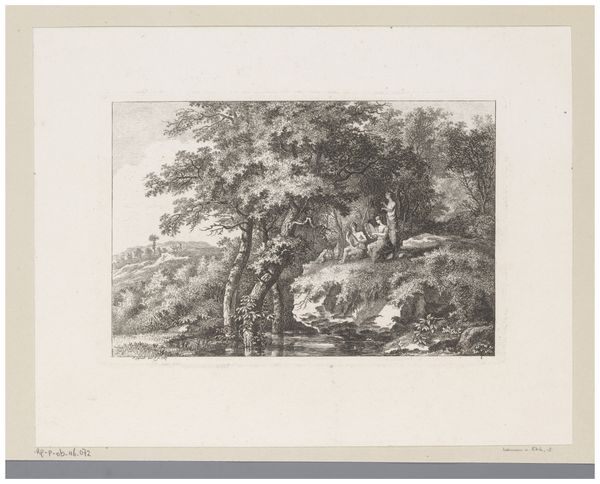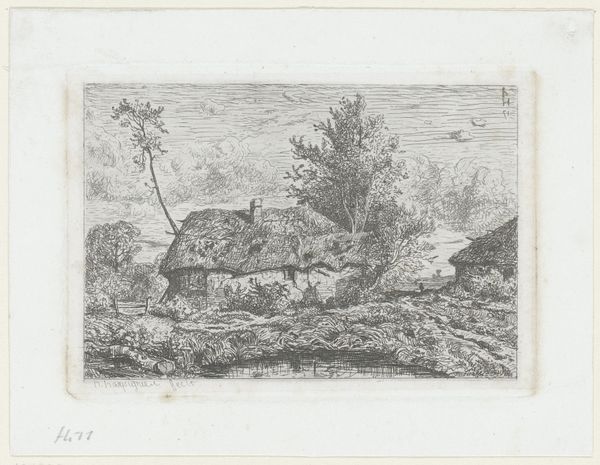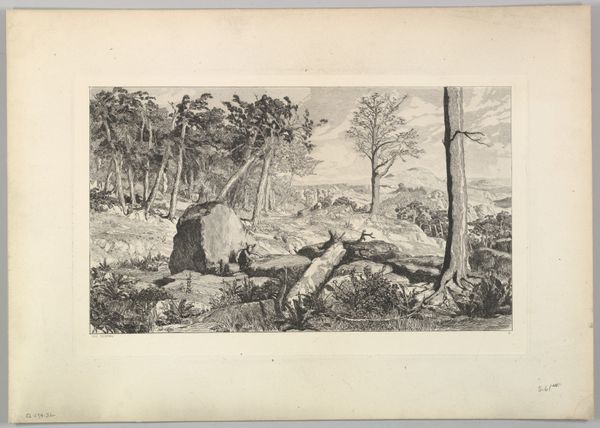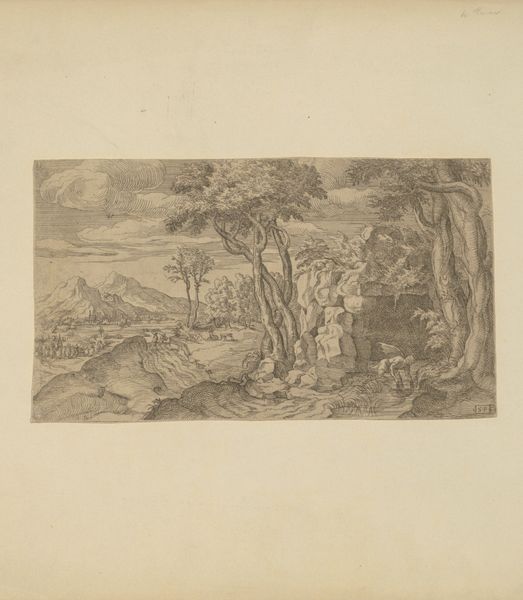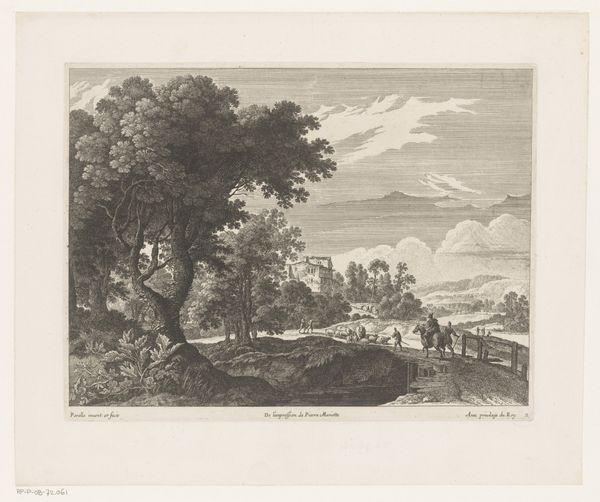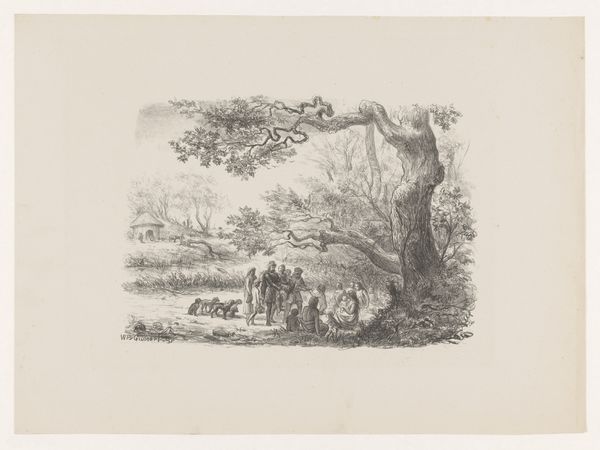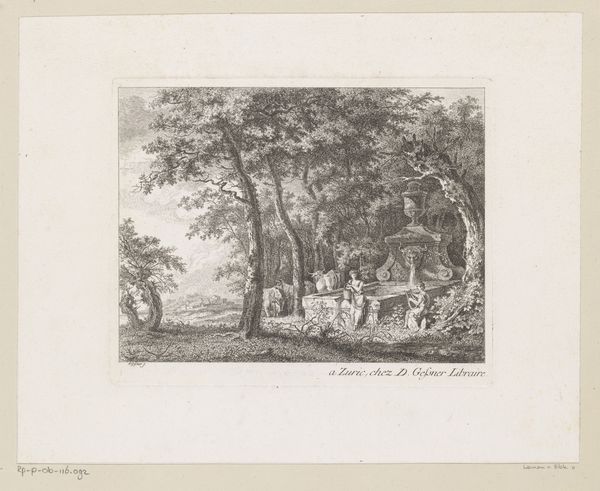
Landschap met een in het water vastgelopen wagen die door een groep mannen op de kant gehesen wordt 1825 - 1891
0:00
0:00
Dimensions: height 363 mm, width 379 mm
Copyright: Rijks Museum: Open Domain
Jean Théodore Joseph Linnig created this etching, "Landscape with a cart stuck in the water being lifted by a group of men", offering us a glimpse into 19th-century rural life. Linnig, born in Belgium, came from a family of artists, and his work often depicted scenes of everyday life. There's a distinct class dynamic here: the men struggle to free a laden wagon, highlighting the physical labor that defined their existence. The driver observes from the high ground, removed from the immediate hardship. His relaxed stance and weapon evoke a sense of authority. The dark, almost claustrophobic etching, conveys a sense of struggle and the relentless demands of labor. There are echoes of the broader social structures where one group bears the burden for the benefit of another. Does this tableau reflect Linnig's personal experiences, or is it a commentary on the societal divisions of his time? Consider how the artist uses light and shadow to emphasize the figures' exertion and the landscape's ruggedness. It's more than just a landscape; it's a stage where the drama of human labor unfolds.
Comments
No comments
Be the first to comment and join the conversation on the ultimate creative platform.
